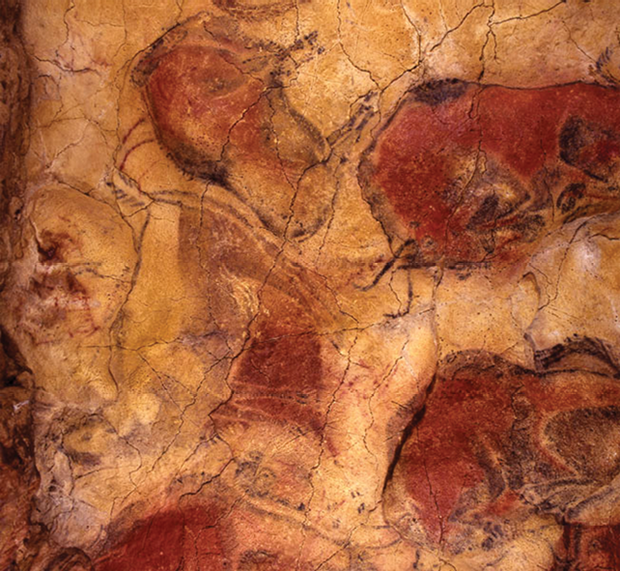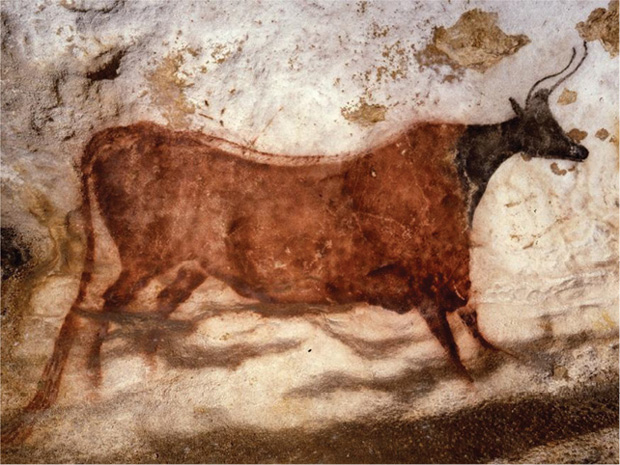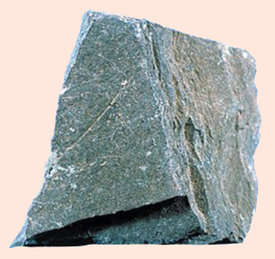How wonderful is to pass knowledge on and see the seed germinate to become a fruitful tree giving off many other generous trees that eventually blossom into a healthy cultural forest to lovingly cradle humanity.
— Max E. Valentinuzzi
Teaching means to transmit a message to others and usually expects nothing in return. Many animal species teach their offspring how to hunt and protect themselves from predators, but this is not teaching in the human sense; it is instinct. They do not prepare lectures or didactic material on this or that subject. Is there a teaching instinct? Many years ago, this idea was discussed by a researcher from Ghana, who pointed out that teaching by punishment is common among animals, but the evidence for teaching by encouragement is weak. Also, it may be difficult to distinguish between a behavior that promotes the learning of skills by imitation, on one hand, and by directed teaching, on the other. There is a third possibility that forms the basis for the educational system of subprimate mammals, that is, the creation by the parent of a situation in which the responses of the young automatically lead to their learning [1]. However, even though such a zoological line of thought following a good Darwinian tradition appears very attractive, our aim here refers to human teaching, from teacher to pupil, from professor to student, and from parents to their children, even when grown up.
Teaching is the builder and main supporting column of civilization; it provides its blueprint; it is the activity that generates education at large and that spreads in all directions, even in time for its long-lasting effects and echoes. Hence, we remember the good and beautiful teaching that recalls that kind young lady who was like a second mother in our elementary school years; the high school professor who triggered our love for chemistry, physics, or any other area of knowledge; or the college teacher who led us to the highest levels of science or arts or humanism, when the teacher–student relationship is established as one of the finest we may have.
Origins of Teaching
From a biological viewpoint, humans tend or want to project themselves to the future through their children; it is an inner driving force, and they feel rewarded when their children succeed in life and, in turn, keep the same trend. In a similar fashion, although not all men and women feel the same drive, many tend or want to project or propel themselves in time through their intellectual progenies, as this earthly life is obviously limited, perhaps pushed by pretense or arrogance or a hidden wish for eternity. Quantitatively, the number of intellectual progenies can be much larger by far than the biological. One typical example is Carl Ludwig, who had almost countless intellectual children, grandchildren, and great-grandchildren, essentially reaching our current generation [2]. The other way to perpetuate one’s existence is by producing great works in science or arts, leaving a message that stays there forever. Leonardo da Vinci (1452–1519) [3], Isaac Newton (1643–1727), Ludwig van Beethoven (1770–1827), James Clerk Maxwell (1831–1879) [4], Louis Pasteur (1822–1895), Albert Einstein (1879–1955), and others, no doubt were, are, and will be demolishing and positive counterexamples in comparison with the ephemeral fame of so many characters found in sports and showbiz or the like. Yes, those “Grands” left a message, a highly significant teaching message that remains in front of everybody who decides to read it.

In Cantabria, Northern Spain, there is the Cave of Altamira, 33 km from the city of Santander, which is famous for its many colorful paintings showing human hands and several wild mammals, all with obvious artistic value. They belong to the Paleolithic Era (Stone Age), are around 18,000–19,000 years old, and were discovered in 1880. The cave is approximately 300m long and consists of a series of twisting passages and chambers. The main passage varies from 2 to 6 m in height (above).
In turn, in France, near the village of Montignac, in the department of Dordogne, we find the Lascaux Cave, with another important set of paintings estimated to be 17,000 years old; they are somewhat newer than the Altamira group and primarily consist of images of large animals (below) [5]. The distance between the two places is relatively short (~1,100 km), and it takes about seven hours by train (looking at it with our 21st-century standards, not at all comparable with those of that age), which makes one wonder of a possible connection or link between the inhabitants of both areas. However, admitting that it might sound as crazy or senseless and recalling similar suggestions made by Charles Darwin regarding the dissemination of animal and plant species…why not [6]? The question is left hanging for the interested specialist.

Did these prehistoric people intend to leave a message? Indeed, they successfully and anonymously projected themselves in time, showing that they already enjoyed an intellect with emotions and feelings; for what else could they have had if not? Moreover, they demonstrated in these paintings the knowledge and technique to prepare the colors, draw, and interpret anatomical features. Outstanding! Moreover, we can now look at these paintings as indelible projections, in a way like today’s short-lived PowerPoint projections during a talk. Too much imagination may be a prickly criticism that we would gladly take. But, no doubt, we can all enjoy those paintings, which compete with those of the best modern artists.
A Couple of Easy and Inexpensive Teaching Tools
Using chalk in school classrooms, with lessons often presented on chalkboards or blackboards using sticks of chalk, proved to be cheap and easy. Chalk did not become a standard in schoolrooms until the 19th century, when class sizes began to increase and teachers needed a convenient way of conveying information to many students at one time. Not only did instructors use large blackboards but students also worked with individual small chalkboards, complete with chalk sticks and a sponge or cloth as an eraser.

Along with the introduction of the modest chalk and its improvements, blackboards came about; they used to be black because they were made from true slate (a fine-grained, foliated, homogeneous rock composed of clay or volcanic ash) (see right). Some people advocated a change to yellow chalkboards and dark blue or purple chalk to simulate writing on paper. At some point, manufacturers began to fashion chalkboards from synthetic materials during the 20th century, choosing the color green under the idea that it was easier on the eyes, but yellow became the preferred one. The blackboard was often replaced by a large rectangular wood piece painted black and, later, a similar piece made of plastic material or even thick glass, while chalk was replaced by water-based pens or the like.
As found in nature, chalk has been used for drawing since prehistoric times, when, according to archeologists, it helped to create some of the earliest cave drawings. It should be pointed out that in the geological sciences, a soft, fine-grained, white sedimentary rock consisting of nearly pure calcium carbonate, containing minute fossil fragments of marine organisms, usually without a cementing material, is called chalk. Later, artists of different countries used chalk mainly for sketches, and some such drawings, protected with a varnish, have survived. Chalk was first formed into sticks for the convenience of artists. The method was to grind natural chalk to a fine powder and then add water, clay as a binder, and various dry colors. Sometimes, carbon was used to create a grayish chalk or and ferric oxide (Fe2O3) for a vivid red. Earlier, softer chalk tended to produce a cloud of dust that some feared might contribute to respiratory problems. Almost all chalk produced today is dustless (well…not quite). I repeat that the main component of chalk is calcium carbonate (CaCO3), a form of limestone [7].
Final Comments… Musings Perhaps
The visual channel remains the best road to reach the cognitive brain areas, making images the essential starting elements. We seem to know better when we can see what we are talking about, and this is why medical imaging has advanced so much. Security cameras have multiplied in urban areas, constantly capturing glimpses of suspects or catching a culprit with his hands in the wrong place. Was the Stone Age man aware of the significance of images and decided to leave us a message?
The development of expressing language by writing letters or other marks was obviously an imaging system that evolved in different human civilizations. It started with the cuneiform system as a very early form of expression, distinguished by its wedge-shaped marks on clay tablets made by means of a blunt reed or a stylus. However, writing numbers for the purpose of record keeping began long before the writing of language. It is generally agreed that the true writing of language was invented independently in at least two places: Mesopotamia around 3200 BCE and Mesoamerica around 600 BCE. Several Mesoamerican scripts are known, with the oldest being from the Olmec or Zapotec Indians of Mexico. Moreover, during the nearly 200 years of modern exploration in the Holy Land, thousands of inscriptions in different ancient languages have been found on stone, mosaic, ceramic, metal, and painted cave walls. Many of these inscriptions have been carefully published, but many others have been published poorly or not at all (Figure 4).
![The Theodotus Inscription, which commemorates the building of a firstcentury BCE synagogue, is one of hundreds of early Jewish writings. The Theodotus Inscription is a splendidly preserved dedication by a certain priest and synagogue president named Theodotus, found just south of the Temple Mount. The Theodotus Inscription states that he built the synagogue for the reading of the law and teaching of the commandments, and the guest house and (other) rooms and water installations for the lodging of those who are in need of it from abroad [10]. (Photo courtesy of the Biblical Archeology Society.)](https://www.embs.org/wp-content/uploads/2015/05/retrospectroscope04-2409105.png)
Nonetheless, there are proof of writing that are completely unrelated: from Egypt around 3200 BCE and from China around 1200 BCE. The Chinese characters are probably an independent invention because there is no evidence of contact between China and the literate civilizations of the Near East. The history of written language is extremely complex and long; this is not the place nor am I qualified to write much about the subject. Thus, it must be said that herein it is stressed that written language is an image, is the easiest to generate, and is extremely powerful in its ability and capacity to transfer information.
In this recently newborn millennium, we have developed several quickly developing technological means of assisting our teaching activities such as, for example, the interactive classroom [8]. Students learn through their participation in the attainment of knowledge by gathering information and processing it by solving problems and articulating what they have discovered. They have at hand opportunities to deepen their knowledge of the subjects while also having the instructor’s feedback about their learning. Beautiful, indeed, but don’t you miss, at least a little, the good old blackboard and chalk, those quickly handmade drawings and long mathematical demonstrations, and what about those forgotten manuscript letters [9]?
References
- R. F. Ewer, “The ‘instinct to teach,’” Nature, vol. 222, no. 5194, p. 698, May 1969.
- M. E. Valentinuzzi, K. Beneke, and G. E. González, “Ludwig: The teacher,” IEEE Pulse, vol. 3, no. 6, pp. 64–71, 2012.
- M. E. Valentinuzzi and G. Pallotti, “Leonardo: The bioengineer,” IEEE Pulse, vol. 4, no. 5, pp. 58–60, 2013.
- M. E. Valentinuzzi and A. J. Kohen, “James Clerk Maxwell, Kirchoff’s laws, and their implications on modeling physiology,” IEEE Pulse, vol. 4, no. 2, pp. 40–46, 2013.
- Schoolworkhelper.net. (2015, Jan. 25). Ancient art: Lascaux & Altamira Caves, Venus of Willendorf, St. Rosemary Educational Institution. [Online].
- C. Darwin, The Origin of Species. New York: Bantam Books, 2008.
- Made How. How products are made. [Online].
- W. Harriet Sheridan Center for teaching and Learning, Brown University, Providence, Rhode Island. [Online].
- M. E. Valentinuzzi, “Manuscript letters…Are they forever past?” IEEE Pulse, vol. 4, no. 3, pp. 48–51, 2013.
- Biblical Archaeology Review Web site. [Online].


